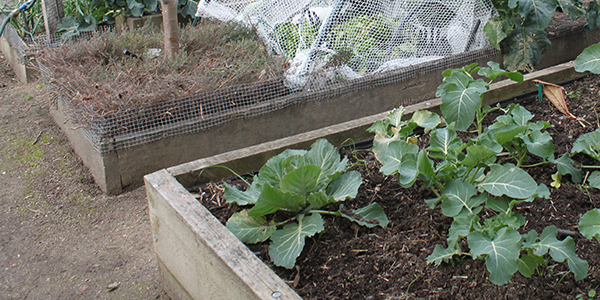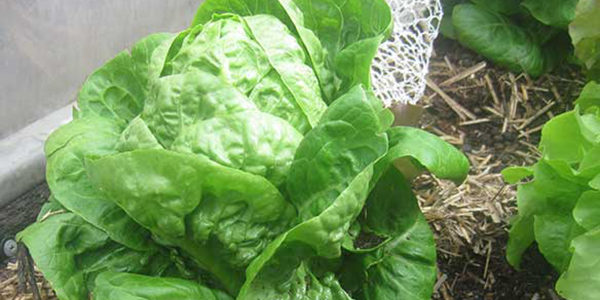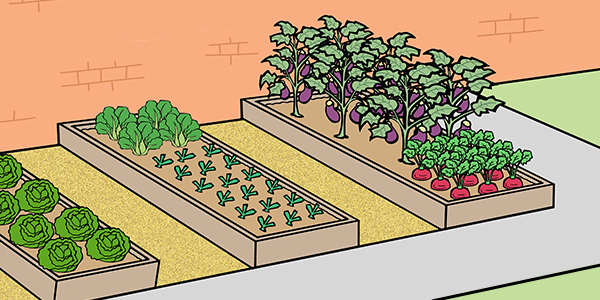While there is a variety of building materials that can be used to make raised beds no specific product stands out as they all have their advantages and disadvantages. Below is a comparison of eight different materials for you to consider. Unless stated otherwise, I have raised beds made from these materials or have used them to make raised beds in the past.
The main advantage of using second hand framing timber to make raised beds is that they are cheap to build as the wood can usually be obtained for free or next to nothing. It is a good option if you are on a low budget.
The main disadvantage is that hardwood rots out quickly, particularly at the corners.
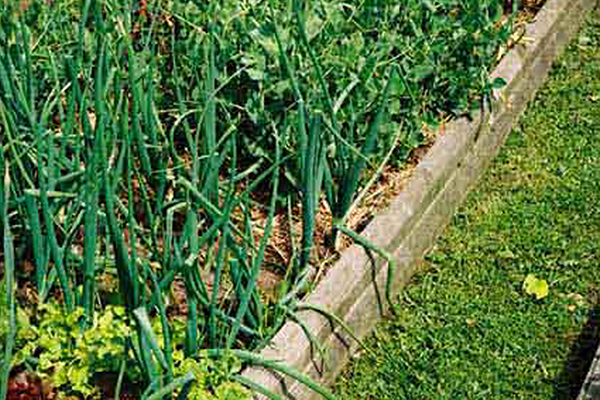
Photo of one of the first raised beds I built. As I scrounged the timber for nothing they were cheap to make. However, the timber rotted out fairly quickly, this bed has since been replaced with a sturdier one made out of treated pine.
ADVANTAGES SUMMARY
ADVANTAGES
- Inexpensive.
-
Lighter and easier to manage than railway sleepers.
DISADVANTAGES SUMMARY
DISADVANTAGES
- Rots out much quicker than Redgum or treated pine timber.
- Two pieces must be nailed on top of one another to get the right height, which involves more work.
-
Can look unsightly.
The main advantage of using galvanised corrugated iron roofing sheets to make raised beds is that the sides can be made higher than wooden raised beds. And as the sheets are thin the bottom edge can be driven deep into the ground with little effort, which is useful for keeping invasive Couch grass out or for containing spreading plants such as raspberries. Corrugated iron also absorbs more heat than wood, which in turn warms up the soil more. This makes corrugated iron raised beds ideal for growing heat loving plants such as eggplant, capsicum and chilli.
The main disadvantage is that galvanised roofing sheets will slowly oxidize when in contact with soil. and in doing so it slowly releases zinc, which is in the galvanizing process. However, as zinc is an essential trace element in soil, it is not considered harmful to plants or animals as the amount released is small.
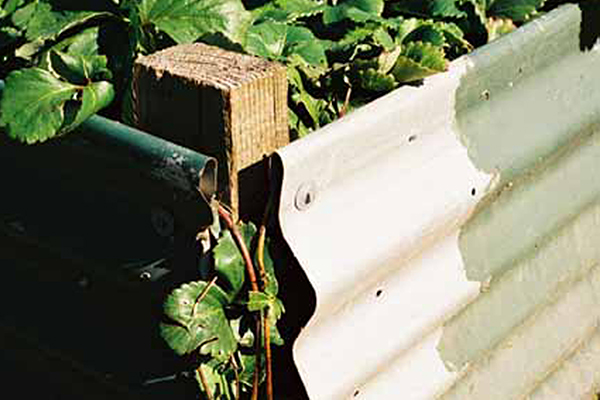
Raised bed made using sheets of galvanised roofing iron. The top edge of the sheets has been bent over and pop rivetted together to form a blunt edge.
ADVANTAGES SUMMARY
ADVANTAGES
- Taller and deeper than wooden raised beds.
- Warms the soil more than timber sided raised beds, which is good for heat loving vegetables.
- Can be made from second had corrugated roofing iron.
DISADVANTAGES SUMMARY
DISADVANTAGES
- Leaches zinc into the soil.
-
Has a higher evaporation rate due to increased warming the soil.
The main advantages of building raised beds with Redgum sleepers is that they last a lot longer than framing timber, contain no chemical preservatives and are lighter and easier to handle than second had railway sleepers.
The main disadvantage is that claims that they are environmentally friendly is questionable as the timber is being sourced from natural Redgum forests that are currently under serious environmental threat.
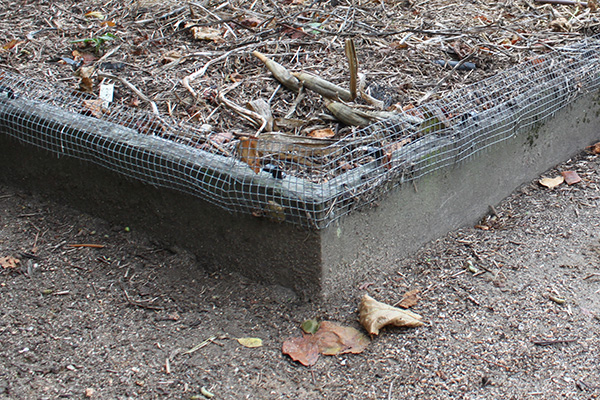
Raised bed made using 50 x 200 mm redgum sleepers. The weld mesh on top is to stop blackbirds scratching mulch onto the paths.
ADVANTAGES SUMMARY
ADVANTAGES
- Last longer than hardwood framing timber.
- Lighter and easier to handle than railway sleepers.
- Contain no chemical preservatives.
- Thinner than railway sleepers.
DISADVANTAGES SUMMARY
DISADVANTAGES
- Sourced from forests that are under serious environmental threat.
- Heavier than treated pine sleepers.
- Made from new wood, difficult to source second hand.
The main advantages of building raised beds with Redgum sleepers is that they last a lot longer than framing timber, contain no chemical preservatives and are lighter and easier to handle than second had railway sleepers.
The main disadvantage is that claims that they are environmentally friendly is questionable as the timber is being sourced from natural Redgum forests that are currently under serious environmental threat.
The main advantages with second hand railway sleepers is that they are long lasting and sourced from second hand materials.
The main disadvantages are that they are expensive and very heavy, which makes them difficult to manoeuvre into place. They are also much thicker than redgum or treated pine sleepers, if used to make a standard one-metre-wide raised bed much of the actual bed will be taken up with the border. In their original role as railway sleepers they were routinely sprayed with very strong chemicals to combat termites, which may end up leaching into your garden’s soil.

Second hand railway sleepers used as a garden border. Their thickness makes them less suitable to be used to make raised beds.
ADVANTAGES SUMMARY
ADVANTAGES
- Sourced from second hand materials, which fits the reuse ethos.
- Long lasting.
DISADVANTAGES SUMMARY
DISADVANTAGES
- Expensive.
- Heavy and difficult to manoeuvre.
- Very wide.
- Sprayed with strong chemicals to combat termites.
The main advantage with treated pine is that it is sourced from more sustainable plantation timber. It is also lighter than Redgum landscaping or railway sleepers, which make them easier to manoeuvre into place when building raised beds.
The main disadvantage is that they are treated with preservative chemicals to make them last longer. These chemicals have the potential to leech into your soil. Treated pine was originally preserved using Copper Chrome Arsenate (CCA) but these days it is mostly treated with Alkaline Copper Quaternary (ACQ),
Copper Chrome Arsenate (CCA)
This is the method first devised to preserve pine and has long been criticised for its use of arsenic as its key preserving ingredient. For details see the Wiki link for Copper Chrome Arsenate.
Alkaline Copper Quaternary (ACQ)
A newer method of treating pine that is claimed to be much more benign than the CCA process as it does not use arsenic. It is however still a poison and should always be treated as such. It is also very corrosive to metal. For details see the Wiki link for Alkaline Copper Quaternary.
ACQ treated pine is becoming much more common, but it pays to check with your timber supplier to make sure which method has been used. I have been told that treated pine posts are more likely to be treated using the old CCA method while sawn treated pine is more likely to use the ACQ process.

Raised bed made of ACQ treated pine raised sleepers.
ADVANTAGES SUMMARY
ADVANTAGES
- Sourced from more sustainable plantation timber.
- Long lasting.
- Lightweight and easy to cut.
DISADVANTAGES SUMMARY
DISADVANTAGES
- Treated with preservative chemicals.
- Not readily available second hand.
The main advantage with using loose bricks to make a raised bed is that they are easy to set up and alter. They can also be rearranged into different shapes, making them quite modular.
The main disadvantage is that they offer plenty of cracks for pests such as slugs and earwigs to hide in. They also cannot be built more than two bricks high without the risk of the sides collapsing. Soil can also fall or be washed through the gaps.
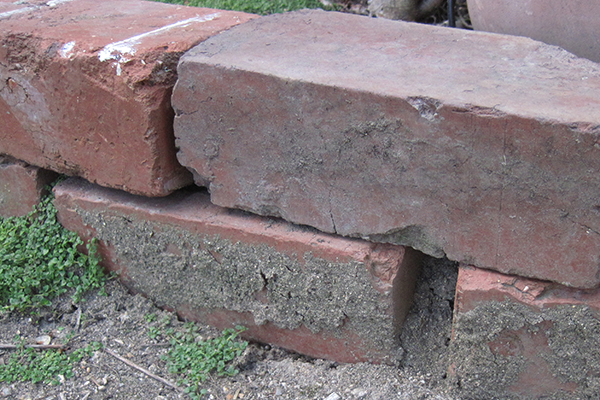
Part of a loose brick wall in my garden.
ADVANTAGES SUMMARY
ADVANTAGES
- Easy to set up and rearrange.
- Modular.
- Can be made using second hand bricks.
DISADVANTAGES SUMMARY
DISADVANTAGES
- Offer plenty of cracks for pests to hide in.
- Cannot be built more than two bricks high.
- Soil can fall or be washed through the gaps.
The main advantages with a raised bed built with cemented bricks is that they are aesthetically very pleasing, offer good thermal mass (good protection against frosts in winter) and can be built in any shape or height.
The main disadvantage that they can be expensive and time consuming to build and once in place cannot be easily removed or altered.
Note that I have never actually made a raised bed using cemented bricks, however I have seen several of them in various vegetable gardens and spoken to the gardeners who made them, and thus have firsthand knowledge of their worth.
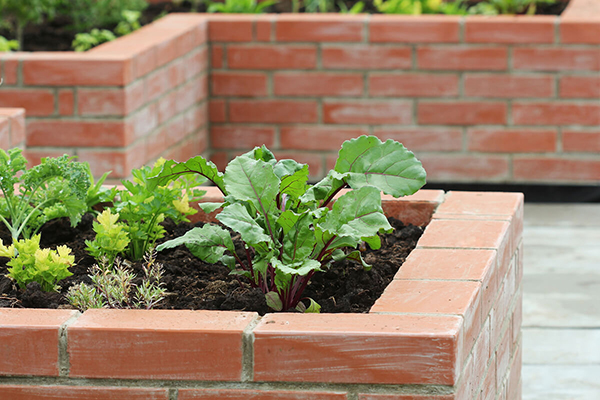
Image of a cemented brick raised bed, courtesy of the internet.
ADVANTAGES SUMMARY
ADVANTAGES
- Aesthetically very pleasing.
- Offer good thermal mass.
- Can be built in any shape or height.
DISADVANTAGES SUMMARY
DISADVANTAGES
- Expensive and time consuming to build.
- Once in place cannot be easily removed or altered.
The main advantage of pre-made Colorbond/galvanised steel raised beds is that they are easy to set up, aesthetically very pleasing and come in a range of sizes and shapes. They range up to eighty centimetres high, making the higher beds ideal for the elderly or people who have difficulty bending. Steel is also a good heat absorber, which makes them good for growing heat loving vegetables such as eggplant and capsicum.
The main disadvantage is that they are expensive.
Note that when I was setting up my garden pre-made Colorbond/galvanised raised beds were not widely available, and as such I have not used any myself. However, I think I have seen enough of them to comment on their worth.
While I do not have any of these pre-made Colorbond/galvanised steel raised beds in my garden the below points are what I would consider if I were to buy some.
- AVOID BEDS USING PLASTIC SUPPORTS
Even if the plastic is UV protected it is likely to fail long before the steel rusts out. - LOOK FOR BEDS WHERE THE TOP EDGES ARE CRIMPED
Colorbond/steel edges are sharp enough to be a cutting hazard. Crimped edges (folding the edge of the steel over on itself to form a blunt edge) avoid this hazard. Some raised beds cover the top edges with a plastic stripping, but in time this strip is likely to break down and fall off, exposing the sharp edge below. - GET BEDS AT LEAST ONE METRE WIDE
Steel absorbs heat more readily than timber, which intern warms the soil more. Warmer soil is good for growing heat loving vegetables, but it also increases the evaporation rate. The sides of narrow steel raised beds have a higher ratio of sunlight exposed steel to the volume of soil within, which pushes the evaporation rate even higher and can overheat the soil in extremely hot weather.
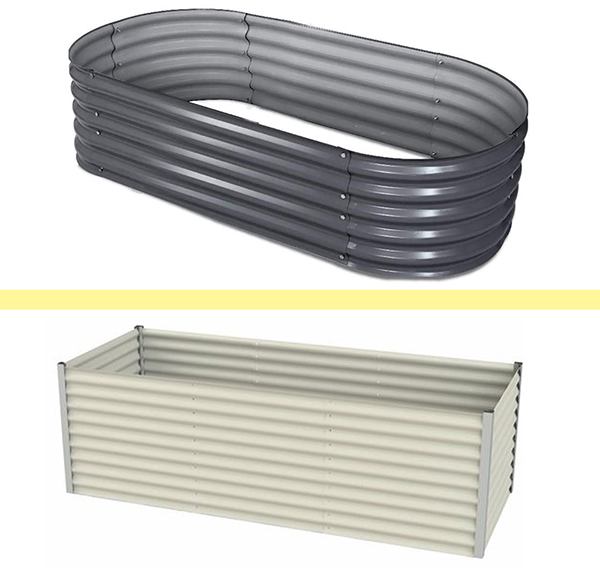
Photos of pre-made raised beds (courtesy of the world wide web). If buying such beds, it is best to get ones that do not use plastic supports. The all steel raised beds are likely to last longer as even UV protected plastic breaks down more quickly than steel.
ADVANTAGES SUMMARY
ADVANTAGES
- Easy to set up.
- Aesthetically very pleasing.
- Wide range of shapes and heights avaliable.
- Good heat absorbers.
DISADVANTAGES SUMMARY
DISADVANTAGES
- Expensive.
- Thinner beds have high evaporation rates and can overheat.


